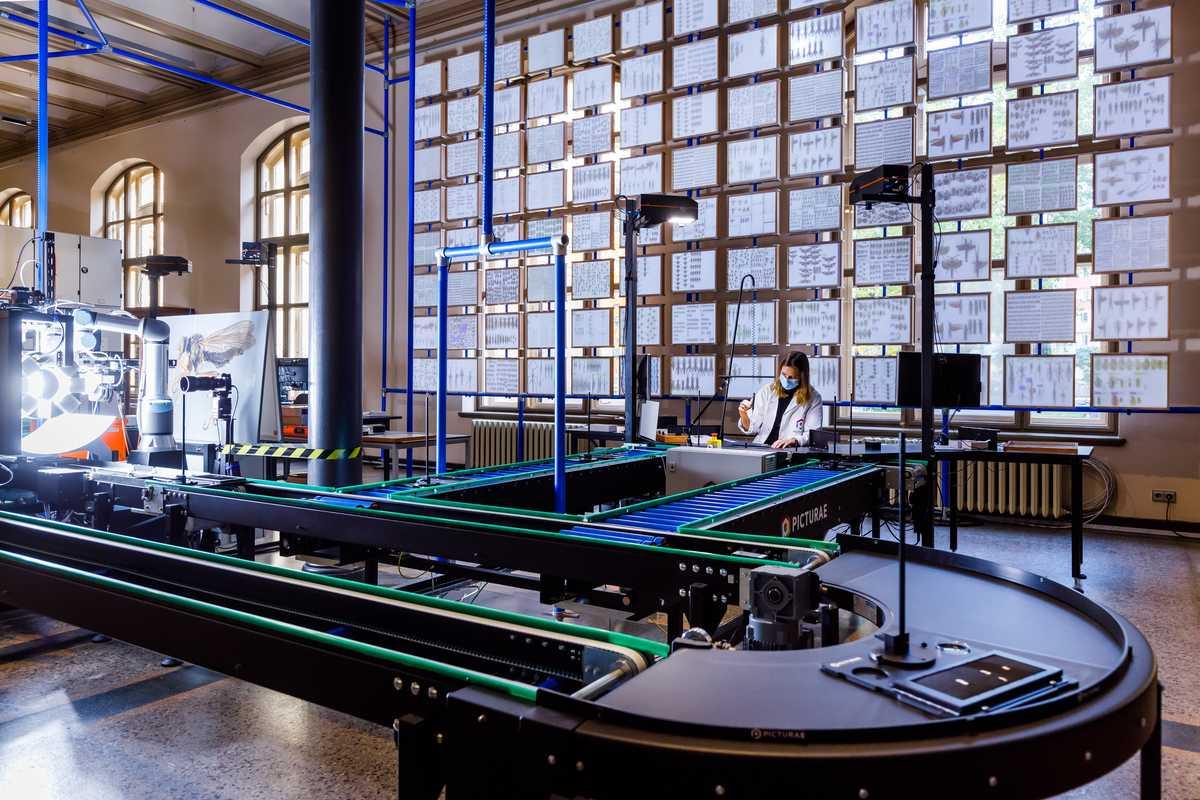In a pilot project, 500,000 insects will be processed and digitized in the Museum für Naturkunde Berlin by the end of April 2022 – in front of the visitors. In "digitize!", from 27 October 2021, the new digitization street – the Entomology Conveyor – will be part of the visitor experience, combining exhibition with working space and thus creating an authentic encounter with digital transformation. Together with partners from business and science, the Dutch company Picturae has developed a digitization conveyor for insects, which is now being used at the museum for the first time. In the high-throughput process, up to 5,000 insects per day – with a maximum size of eight centimeters – will be digitized faster than ever before. And that's just the beginning.
Preserving the diversity of life determines whether humans can remain to live on Earth in the future. Climate change is one of the most deciding factors that affects the future of mankind massively. However, we can learn a lot from our environment and our past. A lot of this type of valuable information is documented in natural history collections at museums worldwide.
With this new way of working, we aim to increase the impact of our collection, by sharing our information with researchers, scientists, businesses and society worldwide. Giving them the chance to help answer questions about the present and future. One click away. Now, we are able to do that in an easily accessible, searchable and shareable way.
The Museum für Naturkunde Berlin will develop its 30 million objects as part of its Future Plan. The collection indexing is a holistic process that includes the conservation processing, recording, digitization, contextualization as well as the creation of access and information networking. This is done on the basis of internationally recognized standards and along diverse usage interests. The collection at the Museum für Naturkunde Berlin thus becomes a modern and globally networked research infrastructure and the museum a motor for innovation and social change.
In order to open up half a million of a total of 15 million insects of our collection in the coming months, the museum is working together with one of the leading service providers in the digitization of natural history collections – the company Picturae. This pilot project is unique in the world and benefits both sides. It is characterized by mutual learning. The team bundles a wide range of expertise from the areas of collection management, data management, digitization and smart technology development. The results are made available in a public data portal, the insects themselves in modern housing systems. This is an essential basis for the study of life and our planet!
The collection of the Museum für Naturkunde Berlin contains more than 200 years of exciting stories about insects and research on natural history collections: Which insect bite is the most painful? What can ground beetles tell us about the state of urban nature? How do 100-year-old bumblebees help to study insect mortality? What do mosquitoes have to do with chocolate and why do you need insects at all?
At the same time, "digitize!" makes the digitization route part of the exhibition experience and thus creates an authentic encounter with the digital transformation. Visitors can be there live as bees, wasps and ants become part of the museum's digital data collection.
From 27 October, a floor-to-ceiling installation will show a section of the museum's huge insect collection. Visitors can see insects up close and be fascinated by their enormous diversity and aesthetics. In addition, the exhibition plays with the possibilities of the digital. Visitors can explore the digitization stations and the room with augmented reality or zoom into high-resolution insect images. "digitize!" uses the digital copies from the project to inspire people for nature.
Photos, information about Picturae and technical details of the system can be found here.
